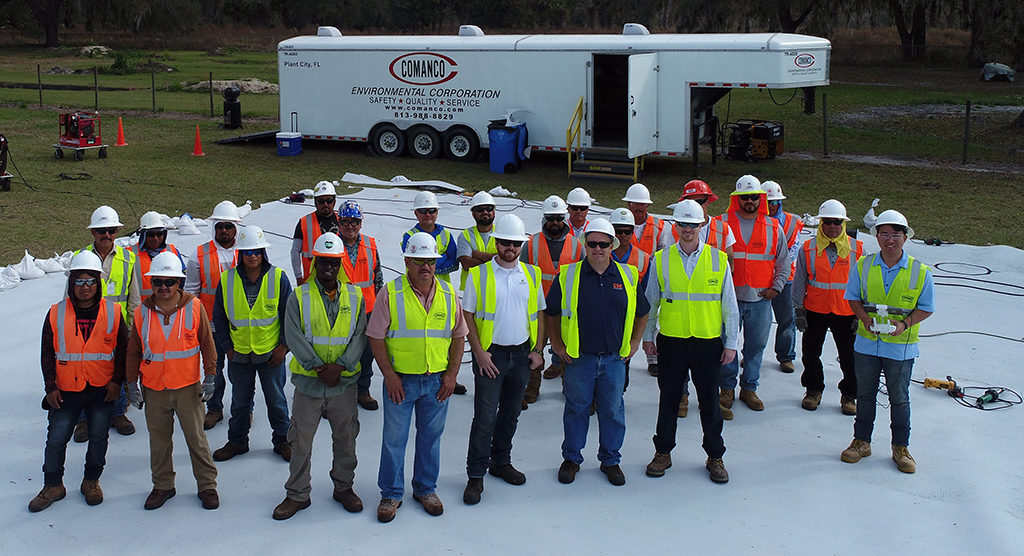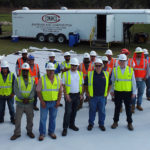Company: ACE Geosynthetics
Project details
Fabric 1 producer: ACE Geosynthetics Inc.
Fabric 1 supplier: ACE Geosynthetics Inc.
Fabric 2 producer: ACE Geosynthetics Inc.
Fabric 2 supplier: ACE Geosynthetics Inc.
Fabric 3 name: ACEFormer
Fabric 3 producer: ACE Geosynthetics Inc.
Fabric 3 supplier: ACE Geosynthetics Inc.
Location: Taiwan
Please describe the project specifications.
The object of the renovation project is Zhongsha Bridge located at Zhuoshui River in central Taiwan. The 2,345m-long bridge sits between Changhua and Yunlin Counties. It is built with prestressed hollow core piles and prestressed beams. The object is part of Sun Yat-sen Freeway (Freeway No.1), the arterial road, which connects all the big cities on the west coast of Taiwan. Therefore, the whole renovation construction has to be in conformity with higher standards and should be held under stricter control. The entire project mainly consists of renovation of riverbank protections below Zhongsha Bridge as well as repair and reinforcement of submerged-weir groundsill works and aprons downstream. The purpose of this project is to secure the farmland against erosion and, more importantly, to ensure the drivers’ safety on the bridge. In this project geotextile tubes ACETube® and geotextile mattresses ACEFormer™ were used to solve the above mentioned problem.
What was the purpose of this project? What did the client request?
The river reach near Zhongsha Bridge faced continuous impact of fluvial processes, including erosion and deposition. What’s worse, the job site happened to be on the outer concave bank of the river where erosion problem was far more serious and, thus, the foundations of the piers were severely undermined by the flowing water. With the soils being washed away bit by bit, the foundations were exposed. The situation was much more life-threatening during typhoon seasons when large-scale floods with sediments struck the exposed foundations and jeopardized the drivers on the bridge. On the other hand, the muddy floods always submerged the farmland adjacent to the river and put the residents and their property in great danger. Therefore, it was urgent to fortify the pier foundations and enhance the protection of the embankments on the river banks.
What is unique or complex about the project?
What makes this project even more challenging is that there are many curves at the job site which are not easy to deal with from the perspective of geotechnical engineering, especially in the presence of water. The protection was designed to be 5.6m high with four layers of ACETube®. After each layer of ACETube® was filled with in-situ sand, in-situ soil was then placed and leveled on the top to make an even surface for the installation of the following layer. Such procedure was repeated until the four layers were finished. At the end of construction, the four-layer structure was covered with ACEFormer™ filled with concrete mortar which not merely increased the impact resistance of the structure and kept ACETube® from external damages caused by driftwood or debris coming down the river but, in the meantime, also enhanced the stability of pier foundations and embankments. Furthermore, the mattresses used here were the ones with permeable filter points which allowed the excess water in the structure to discharge into the river and, thus, maintain the structure more stable. ACETube® and ACEFormer™ proved themselves to be a better solution also because of their flexibility which allowed them to adjust to various land forms in the process of construction. All in all, the combination of these two materials provided more reliable protection to the pier foundations and the embankments and, as a result, greatly and effectively improved the structural safety of the bridge.
What were the results of the project?
The foundation improvement is part of the project started from 2012 to this day. The authorities budget for riverbank protection and maintenance every year with the purpose of ensuring the safety of neighboring residents and drivers. Both ACETube® and ACEFormer™ have been used since the very beginning of the project because of their eco-friendliness and cost-effectiveness. Structures made of these innovative flexible geotextile materials make better use of in-situ sand and soils than those made of concrete. It, on the one hand, greatly reduces greenhouse gas emissions as well as substantially increases environmental sustainability and, on the other hand, allows construction to go on even with limited budget. Meanwhile, the flexibility of these materials makes them adaptable to different kinds of land forms and site conditions. It not only makes construction much easier, but also helps the structures co-exist with the environment. Even typhoons that bring disastrous floods were not able to cause any damage to them. Besides, the completed structures are good for erosion prevention. It shows erosion is under control. On the fertile newly-formed land even luxuriantly grows vegetation that makes the site blend with the surroundings.
Content is submitted by the participant. IFAI is not responsible for the content descriptions of the IAA award winners.


 TEXTILES.ORG
TEXTILES.ORG





